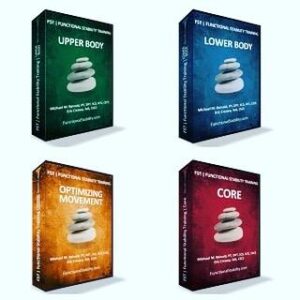
Injuries vs. Whispers
My business partner, Shane Rye, once dropped an amazing one liner with respect to injuries that has stuck with me for years now:
[bctt tweet=”You have to listen when it whispers instead of waiting for it to yell.”]
The concept is simple: if you ignore minor aches and pains, they rarely just magically go away. Rather, they usually get magnified by volume and intensity and eventually reach a painful threshold where are more extensive intervention is required. The research actually supports this concept – but only if you know how to dig a bit deeper.
As an example, consider this Scandinavian study of patellar tendinopathy in junior basketball players. Researchers looked at 134 teenagers (268 total patellar tendons) and found that only 19 tendons presented clinically with symptoms. However, under ultrasound examination, 22% of the remainder of the group (who’d said they’ve never had patellar tendon pain) could be diagnosed with tendinopathy. In other words, “ultrasonographic tendon abnormality is 3 times as common as clinical symptoms.”
Now, keep in mind that this study looked at teenagers, who are markedly less likely to have tendinopathy than older individuals. Just imagine if they’d done this study on a cohort of middle-aged men playing hoops at the local YMCA. The point is that whether you have symptoms or not, you likely have some changes in your tissues.
To be clear, this isn’t particularly shocking to anyone who’s looked at MRIs of asymptomatic individuals. We see loads of asymptomatic rotator cuff tears, spondylolysis (stress fractures), and torn labrums. And, I don’t think we should just treat MRI findings when they aren’t aligned with clinical symptoms. However, they do provide a reminder that we often have several issues that might just be waiting to reach a painful threshold if we aren’t cognizant of our training volume and intensity – and our movement quality.
I call these potential problems “whispers.” Maybe it’s that Achilles tendon that’s cranky first thing in the morning, but feels good after you warm it up. Or, it’s that stiff neck you get after a few hours of working at the computer, but feels better after your spouse massages your upper trap. It could be the shoulder that bugs you only when you barbell bench press, but feels pretty good when you use dumbbells instead. These whispers are all premonitions of an imminent training disaster – so listen to them.
Maybe it’s seeking out some extra manual therapy in a specific area. The solution could be looking at a more individualized warm-up to address these issues. It might even be that you strategically drop particular exercises from your program at various points during the year.
Above all else, though, it’s about understanding that good training teaches your body how to spread stress over multiple joints. Instead of that cranky patellar tendon taking on 90% of the load on each landing, we work on hip and ankle mobility and strength so that it might only have to be 30%. Spreading out the stress ensures that one area won’t ever hit the point of pain.
Understanding how to distribute stress mandates that you understand what quality movement actually looks like, though – and that’s unfortunately where a lot of fitness professionals fall short. With that in mind, many of my products focus on the topics of assessment and corrective exercise, so they’re good options for bringing these knowledge gaps up to speed. In particular, I’d recommend the following ones.
Sturdy Shoulder Solutions – this is my most up-to-date upper extremity resource, and it delves into everything from the neck, to thoracic spine, to scapular control. I discuss functional anatomy and key competencies you need for upper extremity health and high performance.
Functional Stability Training – this four-part series is a collaborative effort with physical therapist Mike Reinold, and we cover core, upper body, lower body, and optimizing movement. The components can be purchased individually or as the entire package (at a big discount).






